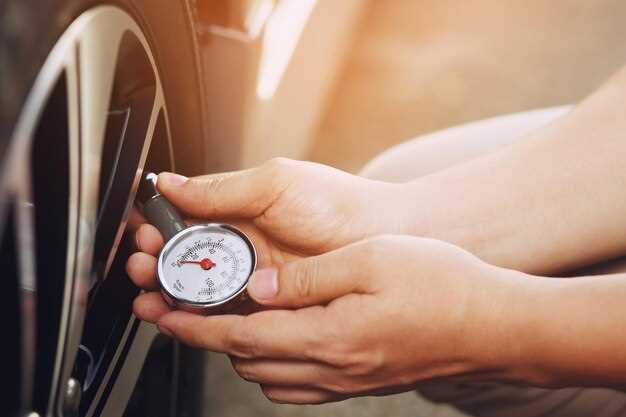

In the realm of performance engineering, finding the optimal balance between power and efficiency can significantly enhance your engine’s capabilities. One of the pivotal aspects to consider is the engine’s revolutions per minute (RPM) range. Increasing your RPM range can lead to improved throttle response and greater power output, but doing so requires careful planning and execution.
To pursue those higher revs safely, it’s essential to understand the dynamics of your engine. Every component, from the valves to the crankshaft, plays a crucial role in how well your engine can perform at elevated RPMs. Engineering modifications must be implemented wisely to prevent potential damage while ensuring that the engine remains durable and reliable.
By incorporating strategies that focus on accurate tuning, upgraded components, and a thorough understanding of your engine’s limits, you can effectively push your performance envelope. Achieving the right balance between power and longevity allows you to enjoy the fruits of increased RPMs without compromising the integrity of your engine.
Optimizing Engine Components for Higher RPM Performance

To achieve higher RPM performance, it is essential to optimize various engine components for better balance and increased rev capabilities. Each component plays a critical role in the overall efficiency and reliability of the engine when pushed to higher revolutions.
One of the primary components to focus on is the valvetrain. Upgrading to lightweight valves and stiffer springs can significantly reduce mass and improve response time at elevated RPMs. This allows the engine to reach higher revs more smoothly and maintains better valve control under extreme conditions.
Pistons are another vital aspect to consider. Lightweight forged pistons can withstand the stresses of higher RPMs while minimizing reciprocating mass. This balance reduces the risk of engine knock and enhances performance across the power band.
Connecting rods must also be tailored for high-rev applications. Opting for rods made from high-strength materials can effectively manage the forces acting on them at increased RPMs. Properly balanced rods ensure that the engine runs smoothly, reducing vibrations that could cause failure or inefficiency.
Moreover, improving the crankshaft design is pivotal. A crankshaft that is both lightweight and robust can withstand higher stresses and contribute to the overall balance of the engine. Additionally, using a forged crankshaft often results in better torsional rigidity, which is crucial for high-rev performance.
Lastly, enhancing the intake and exhaust systems can dramatically affect engine breathing at higher RPMs. Upgrading to performance headers and optimizing the airflow paths can ensure that the engine receives the necessary air supply for increased revs, leading to higher power output and improved efficiency.
By focusing on these components and their interplay within the engine, one can create a well-balanced system capable of sustaining higher RPM performance while ensuring durability and reliability.
Managing Engine Balance to Prevent Damage at High Rev Limits

Achieving high revs in an engine requires careful consideration of its balance. Engine balance refers to how well the moving parts align and operate in harmony, which is crucial when pushing the RPM range to its limits. An unbalanced engine can lead to vibrations that not only reduce performance but can also cause significant damage over time.
One of the primary aspects of managing engine balance is maintaining proper tolerances in rotating components. This includes crankshaft, pistons, and connecting rods that must be appropriately weighted. When these components are not balanced, it can lead to excessive wear and failure, especially at high rev limits where the forces acting on them increase dramatically.
Another critical factor is the design of the engine itself. Some high-performance engines feature counterweights on the crankshaft to offset the forces generated during operation. These counterweights help distribute loads evenly, minimizing vibrations that can result from high revs. Engineers often use advanced computer simulations to optimize balance before the engine is even built.
Seasoned mechanics recommend regular maintenance and inspection of engine components to ensure balance is maintained. This includes checking for signs of wear, misalignment, and imbalance in the rotating assembly. Any irregularities should be addressed promptly to prevent catastrophic failures at high RPMs.
In addition, using quality aftermarket parts designed for high-rev applications can greatly improve balance. These components are often engineered with precision, allowing for smoother operation and less stress on the engine at elevated speeds. They can also provide enhanced durability to withstand the challenges of high rev limits.
Ultimately, maintaining a well-balanced engine is essential for anyone looking to safely increase their RPM range. By managing balance effectively, you not only enhance performance but also safeguard against the risk of severe engine damage when pushing your vehicle to its limits.
Monitoring and Adjusting Fuel Mixture for Enhanced High RPM Efficiency
To optimize engine performance, particularly at high revs, achieving the right balance in fuel mixture is crucial. A proper fuel mixture ensures that the engine runs efficiently, producing maximum power without compromising reliability. Monitoring the air-fuel ratio (AFR) during high RPM operation is essential, as deviations can lead to either lean or rich conditions, affecting both performance and engine longevity.
A lean mixture occurs when there is too much air relative to fuel, which can lead to increased temperatures and potential engine knock. Conversely, a rich mixture, characterized by excessive fuel, can cause poor combustion, increased exhaust emissions, and reduced power output. Regularly measuring your AFR using a wideband O2 sensor allows you to keep track of the engine’s performance across its rev range and make necessary adjustments.
To adjust the fuel mixture for enhanced high RPM efficiency, you can utilize fuel management systems or tuning tools. These systems provide real-time data, enabling you to make informed decisions about your tuning. Adjusting fuel injectors, changing fuel maps, or recalibrating the ECU can help achieve the ideal balance needed for high-performance operation. It’s important to make incremental changes and monitor their impact, ensuring that the engine maintains its optimal performance without risking damage.
In conclusion, achieving high RPM efficiency requires diligent monitoring and precise adjustments of the fuel mixture. Striking the right balance not only enhances performance but also prolongs engine life, making it a vital consideration for any performance-oriented driver or tuner.





